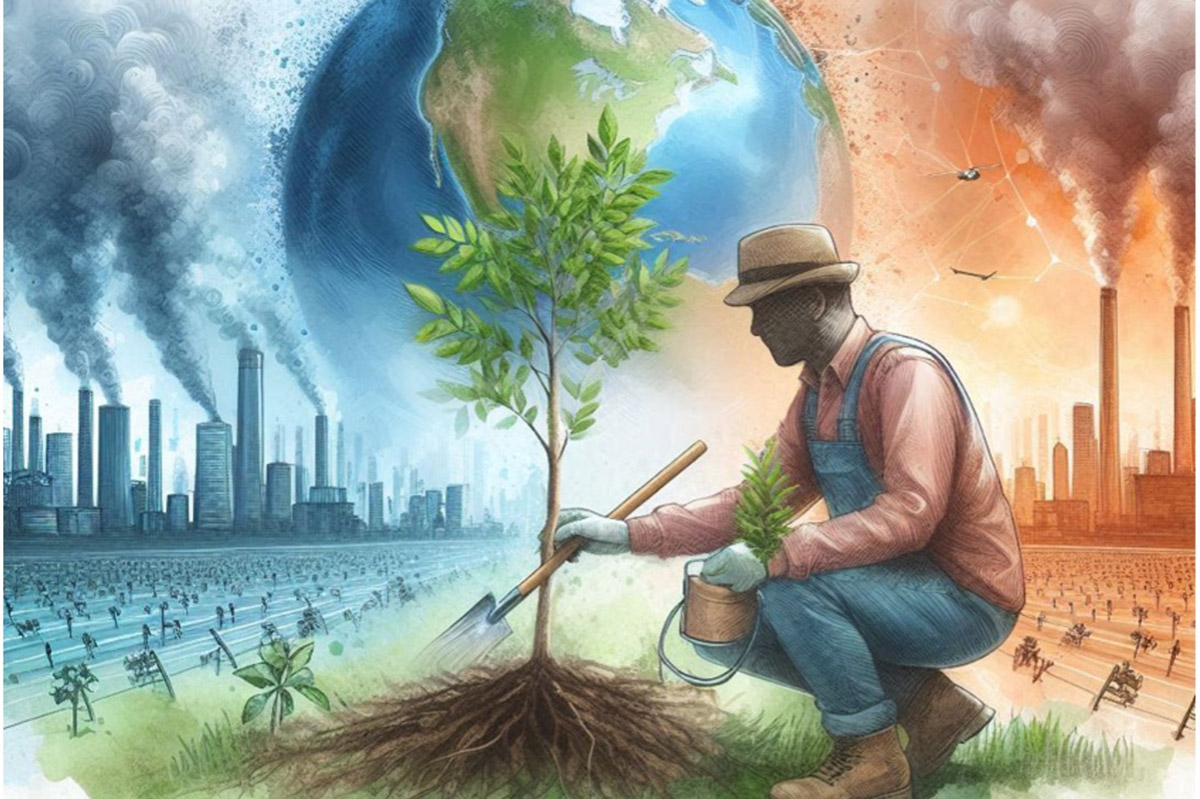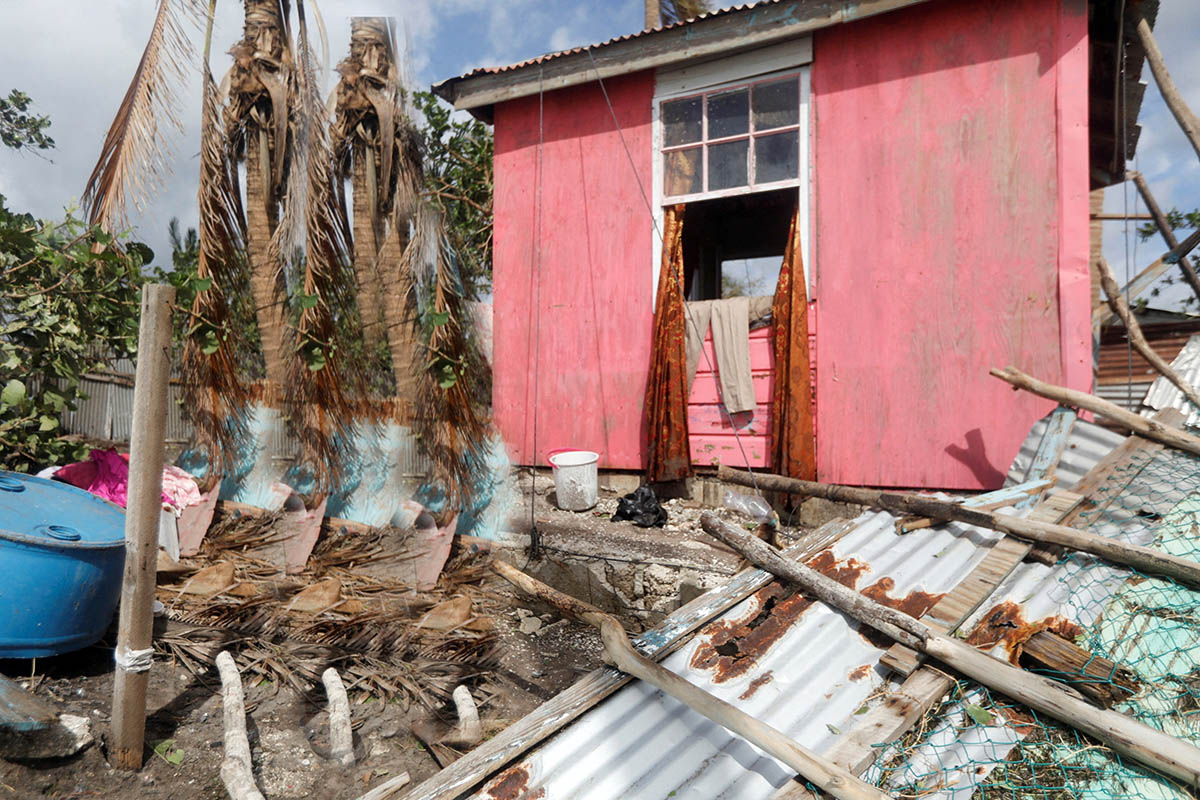Rethinking Climate Change Mitigation Beyond Tree Planting
July 12Photo credit: copilot.microsoft.com
by Vishal Sharma
International Environmental Day on June 5, 2024, brings a host of awareness programs on climate change and various tree-planting drives. Many of us may participate in one or more of these initiatives. Planting trees is crucial for absorbing carbon dioxide (CO2) from the atmosphere. Trees not only sequester carbon but also provide a multitude of other benefits: they improve air quality by filtering pollutants, preserve biodiversity by providing habitats for various species, conserve water resources by reducing runoff and soil erosion, and enhance local ecosystems by supporting a wide range of flora and fauna.
However, amidst the growing enthusiasm for tree-planting initiatives, a critical question tickled my mind: does merely planting a sapling absolve us from the responsibility of mitigating climate change?
“Scientists agree that humans are the primary driver of global warming”
IPCC
While trees play a crucial role in carbon sequestration, they cannot single-handedly solve the complex issue of global warming. The process of carbon sequestration is slow, and the amount of CO2 that trees can absorb is limited compared to the vast amounts being emitted by human activities.
For instance, humans emit approximately 40.4 billion metric tons of CO2 into the atmosphere every year. However, an average-sized tree can absorb only about 22-30 kg of CO2 annually. Therefore, to absorb 40.4 billion metric tons of CO2 per year, we would need approximately 1.836 trillion trees. To put this into perspective, if each tree occupies 10 square meters, we would require 18.36 million square kilometers of land, slightly larger than the combined land area of Russia and Canada, the two largest countries in the world by land area.
This emphasizes the massive scale of reforestation efforts needed to offset 40.4 billion metric tons of CO2 annually, which is clearly not feasible. Hence, planting saplings alone cannot serve the purpose. We must take a multifaceted approach to achieve the target of net zero emissions as set forth by the United Nations.
To understand our personal carbon footprint, let’s examine some common household activities. Using an air conditioner (AC) for about 8 hours a day produces 1800 kg of CO2 per year. Similarly, one LED lightbulb (10 w) produces 15 kg of CO2, a television (LED, 100 w) produces 120 kg, ironing clothes produces 52 kg, a refrigerator (150 w) produces 1000 kg, a laptop (50 w) produces 120 kg, a microwave oven produces 75 kg, and a washing machine produces 164 kg of CO2 per year. Additionally, each pair of jeans in our cupboard has a carbon footprint of 70.2 kg of CO2. A cotton saree, silk saree, and polyester ladies’ suit have carbon footprint of 64 kg, 48 kg, and 42 kg respectively. If you commute 100 km to work using a patrol car, you add another 15.4 kg of CO2 per day. These sources add up to a significant total, with the average person contributing approximately 4500 kg of CO2 per year.
If we believe that planting a sapling, taking a selfie, and uploading it on X, Facebook, or Instagram absolves us of our responsibilities, we need to reconsider.
A Holistic Approach to Climate Action
While reforestation is promising, it should be viewed as one tool among many in the fight against climate change. Behavioral changes in how we use resources are key to tackling this climate crisis. By altering global consumption patterns of products and services, we can significantly reduce greenhouse gas emissions.
The bestseller “Drawdown: The Most Comprehensive Plan Ever Proposed to Reverse Global Warming” identifies 80 substantive existing solutions to address climate change mitigation. Many solutions are at the individual or household level and rely on changing human consumption patterns. Adopting these measures and changing our behavior can help us take meaningful steps towards reducing our carbon footprint and combating climate change. A holistic approach to climate action necessitates comprehensive strategies such as: reducing clothing purchases and ironing less frequently, turning off lights when not needed, using the refrigerator and AC judiciously, carpooling & using public transport, minimizing waste, and adopting resource-efficient practices. We must distinguish between need and greed, as there is enough in this universe to fulfill our needs, not our greed. Through mindful consumption and responsible behavior, we can help pave the way for a more sustainable future.
Dr. Vishal Sharma
Head of the Department of Electronics & IT
GCW Udhampur, Jammu & Kashmir, India
Fulbright Climate Fellow USA,
Commonwealth Fellow UK
Global Goals Ambassador, United Nations (UN) association USA
M.N0: 9419252520




